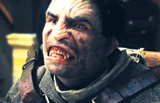
‘The Wolfman’, a remake of the 1941 horror film, brings a classic character back to screens and to audience’s imaginations. Through MPC’s effects artistry, within this tortured individual live both a man and a murderous beast.From Digital Media World Magazine
 |
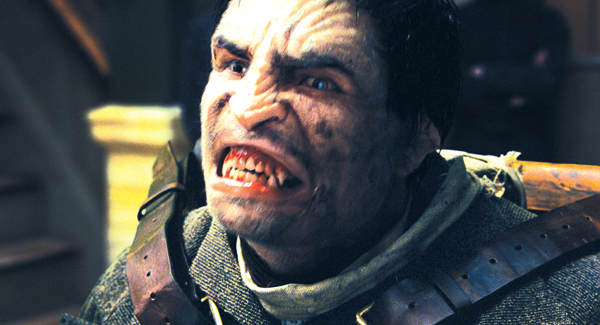  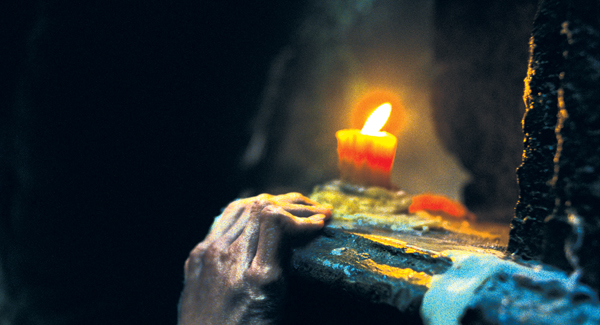 |
|
The MPC was the lead visual effects company for ‘The Wolfman’. Artists from the company’s 3D and 2D departments developed fully animated Wolfman scenes, the lead actor’s transformations from human to monster and enhanced live-action wolfman shots. They also created complete London rooftops and the waterfall environment for film's climactic scene. Trial and Error These scenes, especially, demanded trial-and-error and custom work to achieve what Joe was looking for. He wanted recognition of the classic character but also wanted a new Wolfman no one had ever seen before. Instead of relying so much on the original film from 1941 and the many Wolfman movies made since then for inspiration, Gary explained that the team used real wolves to a large extent to develop details of the transformation forms. Wolfman Design “The concept work we did with Steve Begg drove the material qualities of Benecio’s breaking down and rebirth process, as seen in the T2 sequence in the asylum,” said Gary. “Because Joe was still seeking something fresh and different, even after months of this, we moved the process into animation of the primary geometry to allow him to see the disfiguration in action. This helped Joe to visualise and think through the process and we could launch straight into shot production from there.” Updating Plug-ins At the same time, the facial rigs were developing on the fly as they began to understand more of what the shots would require. The rigs themselves needed to be flexible to accommodate the shifting demands, and the final shapes were ZBrush driven sculpts used as blend shapes. The pattern and colour of the transforming flesh was driven through FX caches, again, to allow the process to remain ‘live’ and flexible, and this process was then used to drive a basic shader change. Gary said, “They also had the ability to work in very fine detail on individual parameters of the shaders on the body, but were also output as flat maps that were driven through UV outputs in Shake and Nuke for finer control.” Six Stages Gary described paying close attention to the detail of the skin. “Conceptually, Steve Begg and I had very clear ideas of how we wanted the flesh to perform. When Benecio is first succumbing to the effects of the process, we slacked and softened the details of his face to take him to a more baby-flesh version of his own skin. This ‘new’ skin then developed a fine downy fur all over. Then the ‘gross shape changing’ kicked in and he went to a special place. “Joe wanted to direct this transformation in detail and we went through a lot of variations of more and less extreme versions before landing at what you see in the film. His nose collapses and reforms, his jaw slackens and widens, and his cheekbones pop out into a broader shape. In the last few shots, his skin gets harder and more leathery and he directly moves towards the shape of the Rick Baker prosthetic Wolfman. Head Sculpts Cyberscans of the actor Benicio del Toro were used as the foundation of an articulated head rig, capable of shifting from a human being to a fully transformed Wolfman. “Rick Baker and creature effects supervisor Dave Elsey had done a number of beautiful head sculpts as proposed transformation stages. Steve Begg had all of these cyberscanned and we spent time creating low-res proxies and animated blend stages between them. They were scanned in the makeup FX offices at Pinewood. |
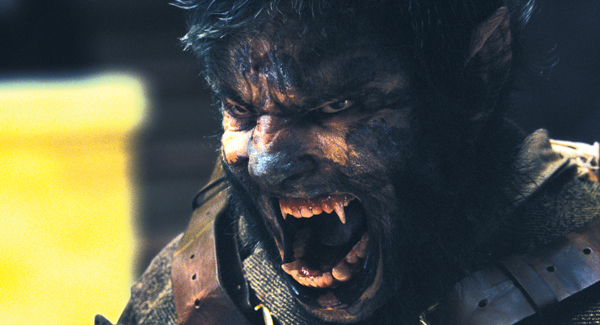 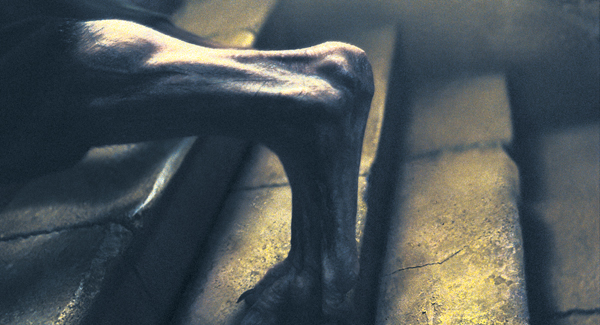 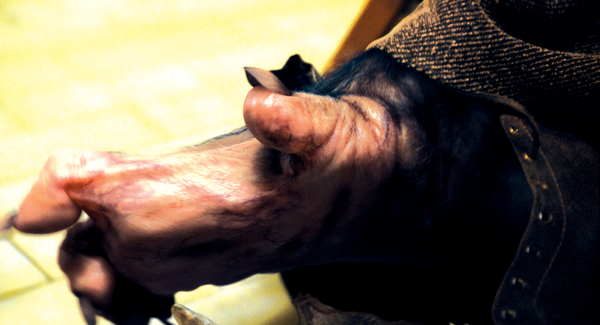 |
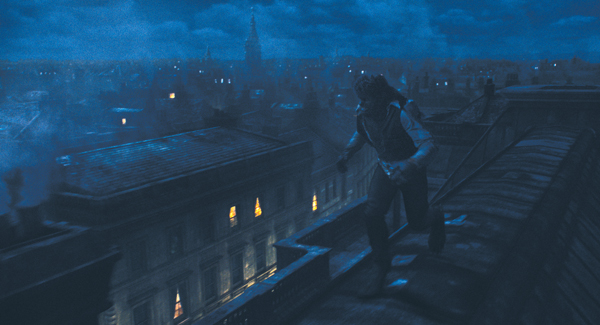 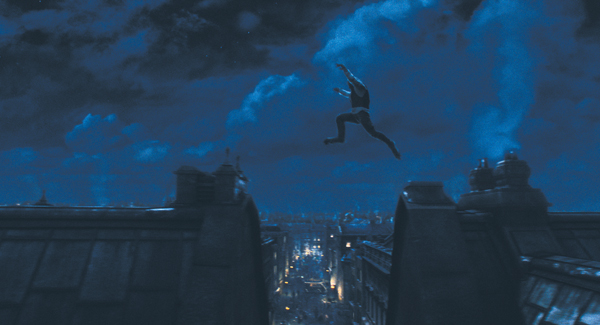 |
| From Cyberscan to Rig “The scans are invaluable to us as they are always there for us to refer to throughout post as a reality check. They also remove a lot of what would otherwise be interpretations of the contours of the principle actors/creatures face. It speeds the modelling process up enormously and eliminates any questions of accuracy for us and the client. “We rig through Maya and a host of in-house plug-ins. The articulation in the rigs of the head and of the hands and feet in particular, was extremely important because their shape-changing relied completely on our rigs’ ability to cope with ANY idea, from melting bones to webbing skin to cracking fast growth.” Frame by Frame The same technique was used to create the vein and colour change in the transformation scenes. The compositors really brought transformation shots together, tracking in fine veins and skin changes based on texture work generated by the effects team. Up on the Roof “Once we have the images, all modern figures are removed and geometry is created based on the images. Also, on set a lot of survey information is recorded, including lidar scans and photos, that can be used to recreate a 3D view of the shot. We then combined these with buildings created from photographs of different buildings in London. The aim was to follow the production design set by Rick Heinrichs.” For the roof top stunt, they had a large stage built which included chimneys and parts of roofs, and they had also taken photos of these elements and re-created them in 3D to combine them with other 3D models. Recreating the environment meant they also gained control of the lighting of the elements. Light and Shadow Compositing continued to be an important part of environment design for the final scene of the film when the lead character, as the hunted Wolfman, meets his end. A gorge environment with a waterfall is created using multi-layered 2.5D rendering techniques combining shot footage of a waterfall in Wales, rock formations from the Lake District, trees from Bourne Wood and blue screen elements including plates of plants. These components were composited together to create the final image. Words: Adriene Hurst |
| Featured in Digital Media World. Subscribe to the print edition of the magazine and receive the full story with all the images delivered to you.Only$77 per year. PDF version only $27 per yearsubscribe |


















